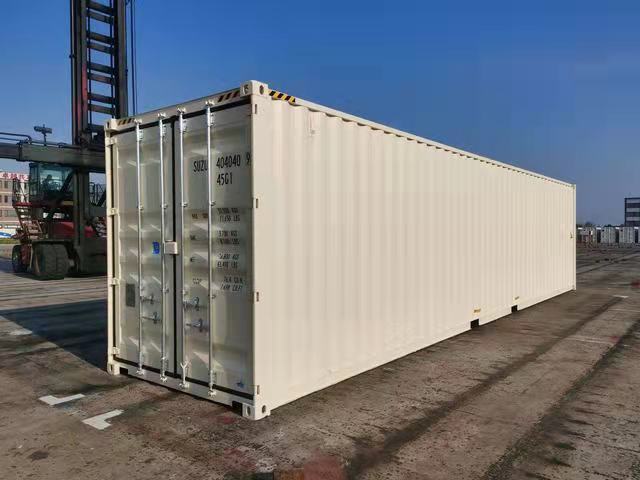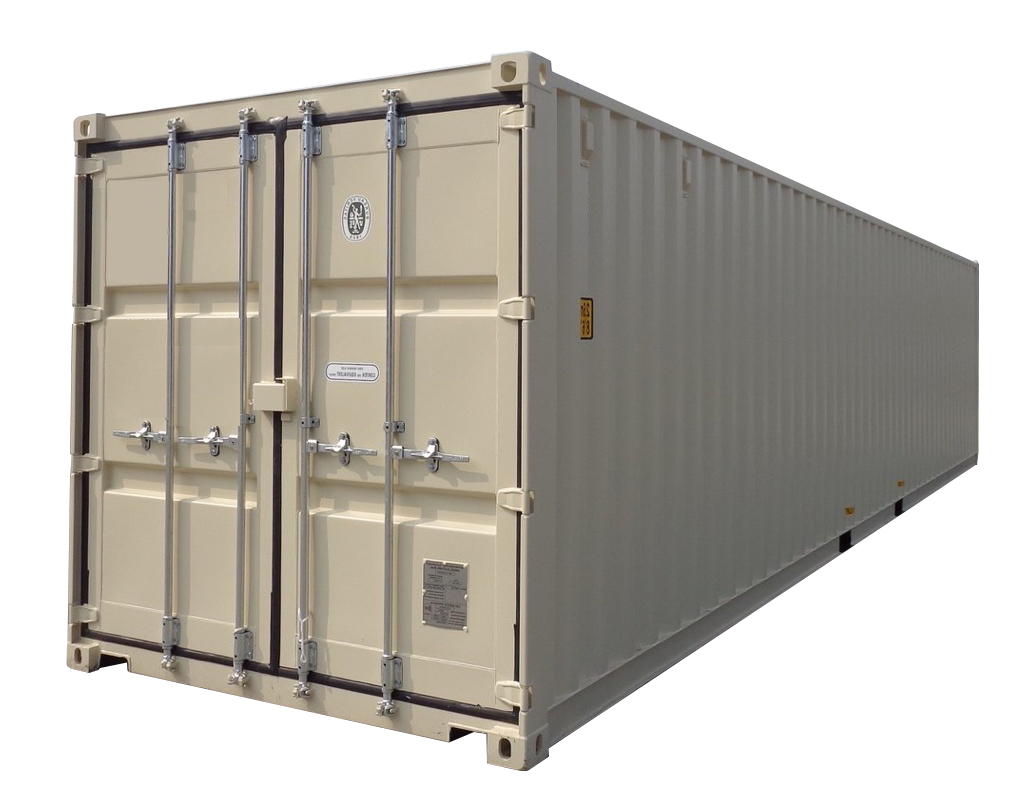Why You Shouldn’t Wait to Shop New Shipping Container 40 x 8 x 9.6 for Disaster Relief Projects
Why You Shouldn’t Wait to Shop New Shipping Container 40 x 8 x 9.6 for Disaster Relief Projects
Blog Article
The Ultimate Guide to Picking the Right Shipping Container for Your Demands
When it involves picking the right shipping container, understanding your details demands is essential. You'll want to take into consideration variables like dimension, kind, and product to assure you make the most effective choice. From typical sizes to specialized options, there's a whole lot to check out. And also, budgeting for both the container and any adjustments can make a large distinction. Allow's break down the essential elements to help you locate the excellent suitable for your requirements.
Understanding Delivery Container Sizes
When you're picking a shipping container, comprehending the numerous sizes available is critical for making the best choice. Shipping containers usually are available in typical lengths of 20 and 40 feet, but you'll additionally locate various other dimensions. Understanding the size you need relies on what you prepare to store or transport.If you're moving smaller items, a 20-foot container may be perfect, while bigger deliveries frequently need a 40-foot container. Remember that the height can additionally differ; high dice containers offer additional vertical room, which can be advantageous for taller goods - Lease New Shipping Container 40' x 8' x 9’6".Before deciding, measure your freight, and consider just how much space you'll need for packing and discharging. Always consider prospective future demands-- choosing a somewhat larger container may save you headache down the line. Eventually, picking the best dimension will certainly enhance effectiveness and guarantee your products are safe throughout transit
Types of Shipping Containers Available
There are several sorts of shipping containers available, each created for specific purposes and freight needs. The common dry container is flexible, perfect for general cargo. If you're delivering disposable goods, take into consideration a refrigerated container, which keeps a controlled temperature. For large things, high cube containers offer added height, fitting taller loads.If you need to carry hefty equipment or equipment, flat shelf containers give a tough base without walls. At the same time, open-top containers enable very easy loading of tall cargo, with a detachable tarpaulin covering for defense. If you're seeking versatility, think about a retractable container that can be quickly stored when not in use.Lastly, specialized containers like tank containers are utilized for fluids, while vented containers are created for bulk freight that needs air flow. Understanding your freight kind will certainly aid you select the appropriate container to meet your delivery requires successfully.
Material Considerations for Sturdiness
When choosing a delivery container, the material plays an important function in its durability. You'll want to evaluate the benefits of steel versus aluminum, especially relating to corrosion resistance. Understanding these aspects can help you make a much more enlightened selection for your delivery needs.
Steel vs. Aluminum Containers
How do you choose in between steel and aluminum containers for your delivery needs? Start by thinking about toughness. Steel containers are durable and offer superb toughness, making them suitable for heavy loads and extreme problems. They resist damages from impacts and are typically less pricey, which can be a significant factor for budget-conscious buyers.On the various other hand, light weight aluminum containers are light-weight, which can conserve you on shipping prices. They're simpler to steer and are a fantastic selection if you require to deliver goods often. Light weight aluminum is normally much more pricey and less robust than steel. Consider your details needs thoroughly, including weight, cost, and the kind of cargo you'll be delivery, to make the right selection for your situation.
Corrosion Resistance Aspects
Selecting the appropriate material doesn't simply entail weight and price; corrosion resistance plays a substantial function in toughness. When choosing a shipping container, take into consideration the environment it'll encounter. Steel containers, while strong, can corrosion otherwise appropriately treated. Seek alternatives with safety finishings or galvanization to improve their life expectancy. Aluminum, on the other hand, provides natural corrosion resistance, making it optimal for seaside areas or damp problems. It can be more pricey. Additionally, evaluate the container's usage-- if it'll be exposed to chemicals or harsh climate, focus on materials that can withstand these problems. Purchasing a corrosion-resistant container now can save you from expensive fixings or substitutes down the line. Select intelligently for long-lasting advantages.
Adjustments and Personalization Options
Delivering containers aren't just for transferring items; they can be changed to meet your specific requirements through various adjustments and customization alternatives. You can transform find a basic container into a cozy workplace space, a short-term retail shop, or also a personal health club. The opportunities are almost endless.Think concerning including home windows, insulation, or ventilation to improve comfort. You may additionally take into consideration electrical circuitry, plumbing, or also custom shelving to boost functionality. If security's a concern, enhanced locks can give peace of mind.For visual appeal, you can repaint the container or add an one-of-a-kind design to make it stand out. Don't forget flooring options-- whether you want long lasting plywood or something extra sophisticated, it can boost the space.Ultimately, tailoring your delivery container to suit your demands can improve functionality and produce a special atmosphere that mirrors your style.
Assessing Your Transport Demands
When it concerns using your changed shipping container, understanding your transportation needs is key. Beginning by determining what you'll be delivery-- whether it's hefty devices, retail items, or personal products. Each sort of freight has various demands regarding size, weight, and accessibility.Next, consider the range and setting of transportation. Are you delivering locally, country wide, or globally? This impacts the container's style and capability. If you're using trucks, guarantee your container fits standard dimensions for very easy loading and unloading.Additionally, consider transportation problems. Will your items require unique defense from weather or temperature variations? If so, you could need insulation or air flow functions in your container.Lastly, examine exactly how frequently you'll be transporting items. Regular deliveries might need an extra sturdy and flexible container to satisfy recurring demands. By attending to these variables, you'll be well-prepared to choose the best delivery container for your demands.
Budgeting for Your Delivery Container
Establishing a budget for your delivery container is essential for guaranteeing a smooth purchasing process. First, establish just how much you can pay for to invest. Bear in mind that costs can vary significantly based upon size, problem, and kind. New containers generally set you back more, but made use of ones can supply significant savings.Next, think about any kind of extra prices you could incur, such as transportation fees, delivery fees, and adjustments. If you plan to tailor the container, consider those costs also. Research study various suppliers to compare rates and discover the most effective offer that meets your needs.Don' t fail to remember to include any kind of licenses or guidelines that may relate to your purchase and usage of the container. By clearly outlining your budget, you'll be much better prepared to make enlightened decisions, guaranteeing you obtain the right container without damaging the bank.
Maintenance and Take Care Of Longevity
To ensure your delivery container lasts for several years, normal maintenance is key. Beginning by examining the outside for rust, damages, and damages. If you identify any kind of concerns, resolve them instantly to stop further deterioration. Tidy the container occasionally, both in and out, to remove dust, particles, and dampness that can lead to corrosion.Ensure the doors seal correctly and lubricate the hinges to stay clear of corrosion and sticking. If you're read here making use of the container for storage, consider including ventilation to minimize humidity and mold and mildew development. For extra security, apply a rust-inhibiting paint or sealant annually.If your container's situated in a severe environment, like seaside locations, you may need to enhance upkeep frequency. Watch on the flooring, also; any type of signs of wear must be repaired right now. With these basic steps, you'll prolong the life of your delivery container substantially.
Frequently Asked Questions
How Do I Discover a Trusted Shipping Container Provider?
To discover a reputable delivery container vendor, begin by looking into on-line testimonials, requesting for referrals from friends or sector calls, and contrasting rates. Constantly inspect their credentials and assurance they provide high quality containers that satisfy your needs.

Can I Rental Fee a Shipping Container Rather Than Purchasing?
Yes, you can absolutely lease a shipping container instead of purchasing one. Many providers provide rental options, which can conserve you money and supply adaptability if you just require it for a short period.
What Permits Are Needed for Container Positioning?

Are Delivery Containers Weatherproof and Suitable for Outdoor Storage Space?
Yes, delivering containers are usually weatherproof, made to hold up against rough problems. Their durable building and construction maintains your products safe and dry, making them appropriate for exterior storage. Simply ensure correct ventilation to avoid moisture buildup inside.
Exactly how Do I Transport a Shipping Container As Soon As Bought?

Report this page